Both removing negative search terms and channeling others onto your website’s most relevant landing pages are fundamental to the maintenance of a healthy CPC (cost-per-click) ad campaign. In this instance, we’ll go through the brief steps necessary to both make sure that you’re not paying for unwanted ads, and that you have created the most effective ads possible by best meeting the intent of the consumer.
Firstly, in order to do a comprehensive review of which search terms you are paying google to advertise for, one ought to make sure that they’re looking at a time frame that goes back at least as far as the last time they really scrutinized the key word terms for which ads had been run. In the example below, you can see that I’m on the keywords tab, and have selected the entire time-span of this particular campaign
Secondly, click the keywords tab, then Details drop-down, and select All in order to have a look at all of the keywords in your campaign.
Alternatively, you can select a specific ad campaign, or narrow by a number of criteria, but in this case we’re looking at all of the keywords that we’ve run in order to do a thorough check of what is and isn’t running.
Once we’ve done this, we can start to consider the most important factor in CPC, which is what the intent of the consumer is, and how relevant the page that we’re paying to send them to is.
In the case illustrated below, we’re looking at an ad group that’s marketing watch bands (in this case, the ad group is sending them to a page that is specific to bands for a type of watch) As can be seen, I’ve already selected two search entries for which I don’t believe it’s worth paying to have my watch band page exposed.
In this case, both of the search queries end with the word watch, which suggests that these searchers will not be content with viewing straps alone. The clicks and click-through-rate are very subjective, but nonetheless one can see that there is Moreover, let’s say in this case that my site does actually sell this entire watch, the fact is that the average internet shopper will not take the time to navigate through my site to find this page.
In order to address this issue I select the keywords watches casio baby g watch and baby g watch sale. By clicking on add as a negative keywords, I’m given the option to remove these search terms from either my ad group or my ad campaign. The difference being that selecting campaign level, I will exclude any of my ad groups within this campaign from showing ads.
My second consideration is whether or not I do, in fact, sell this watch model. For the purposes of illustration, let’s say that I do sell this watch model, and thus have a page that meets the likely intention of this searcher- to purchase a watch. Therefore it’s worth my while to create an ad group that links these queries to the intentions of searchers
By going to All Online Campaigns, and selecting the Ad groups tab, I’ve determined that no such Ad group exists.
Making sure that I am in the appropriate campaign, in this case we’ll say I have one campaign for anything watch related—listed on the left or under the campaigns tab—I click the red + AD GROUP button. Then I am prompted to assign my new Ad group to a campaign.
As can be seen below, Google provides an easy template for creating new ads, in this case filled in for previous ads I’ve run.
This part is fairly self-explanatory, with Google’s instructions on “how to write a great ad” readily available with the link above the ad-preview. The most important consideration in the construction of this ad group is the connection between my specific watch page and the key words that I believe represent the intention of purchasing that specific model.
One of the final steps is reached by scrolling down the page: entering the keywords that you would like to trigger this particular ad. In this case, it would be wise of me to enter as many common variations on the target keywords as possible, perhaps even misspellings. However, in this case, I’ve entered the search term we first identified three times to illustrate the importance of defining what types of matches one wants to trigger their ad:
In this case I’ve decided that I want broad match- searches containing the words in my listed keyword; phrase match– searches containing these keywords in this order anywhere within a search query; and finally exact match- a search of exactly the keywords listed, no more, no less (accordingly denoted by no punctuation, quotation marks, and brackets). One can imagine how a broad match watch would technically meet the search criteria of millions of queries, most of which would likely have to do with entertainment, not the watches I want to sell ads for.
The final step involved is to set the Maximum CPC you’re willing to pay for you’re ad to appear. This is a very subjective step as well, and involves factors that cannot be touched on here, but finding a sustainable level is recommended.
After clicking the blue button, you’ve created you’re new ad campaign!
In my case, I’ve made sure that I don’t pay to send any more searchers who want to see a watch to a page full of watch straps by adding a search query to the negative keyword list in one ad group. Furthermore, I’ve identified a page of mine that meets the intentions of the searcher, suggesting that the creation of an ad to meet that need will likely be a positive decision.

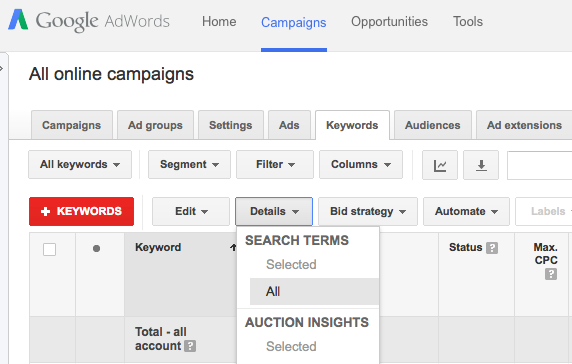
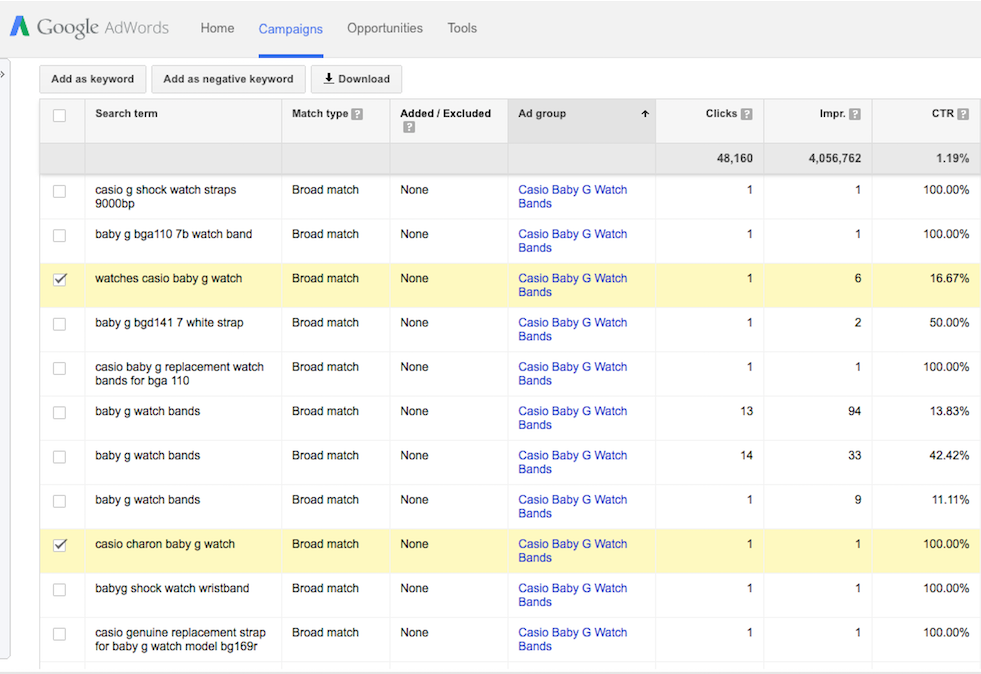
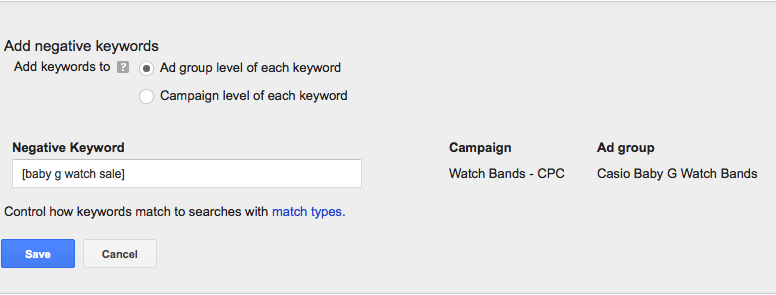
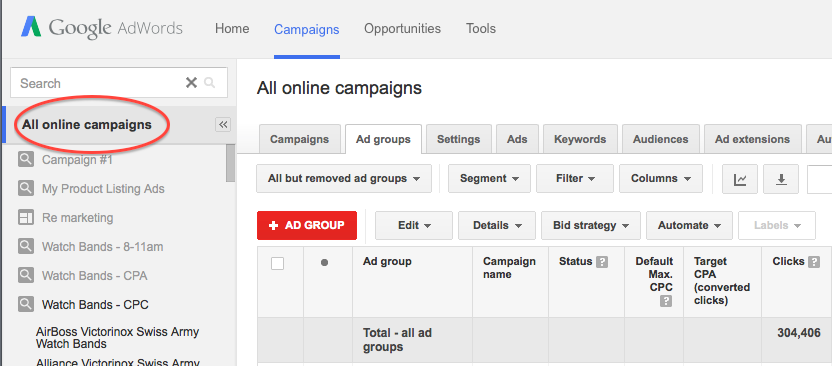
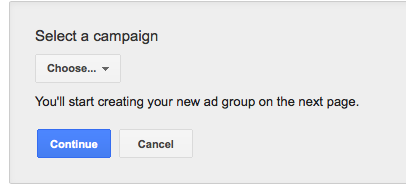
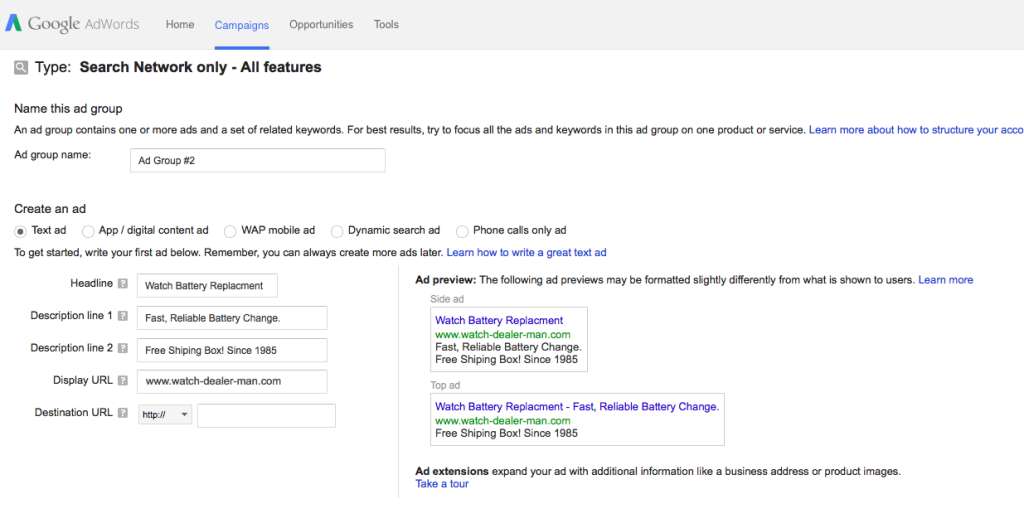
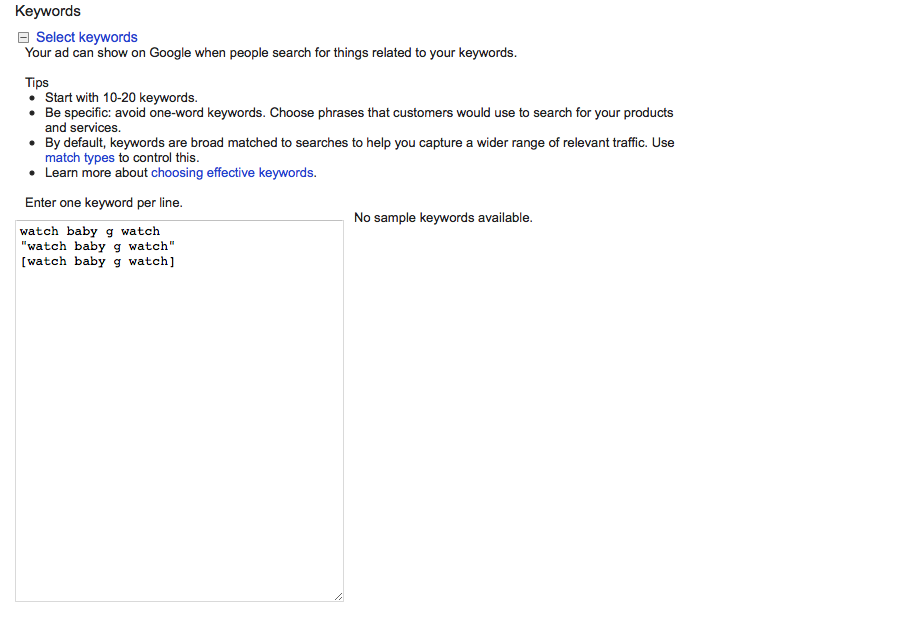




Leave a Comment
You must be logged in to post a comment.